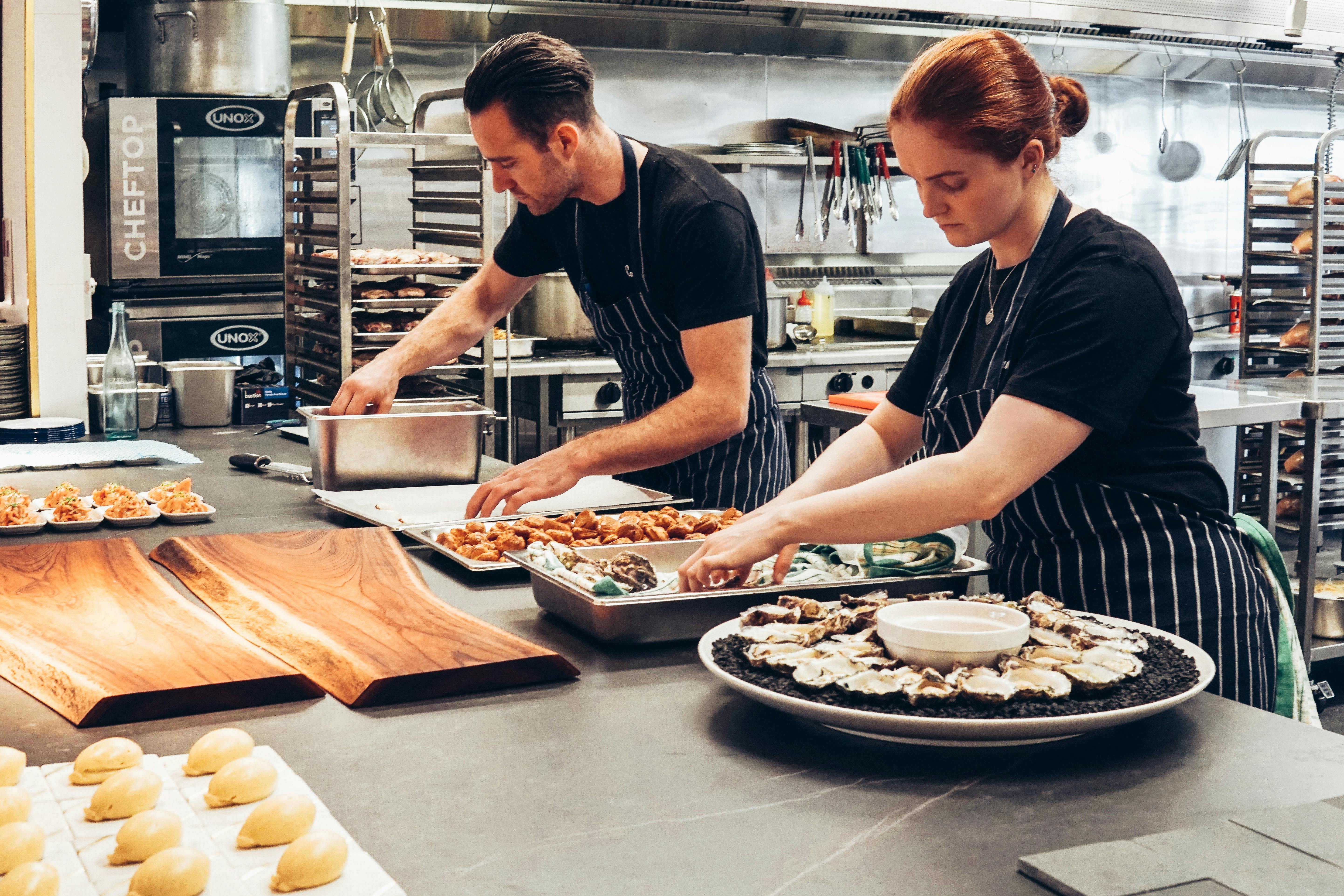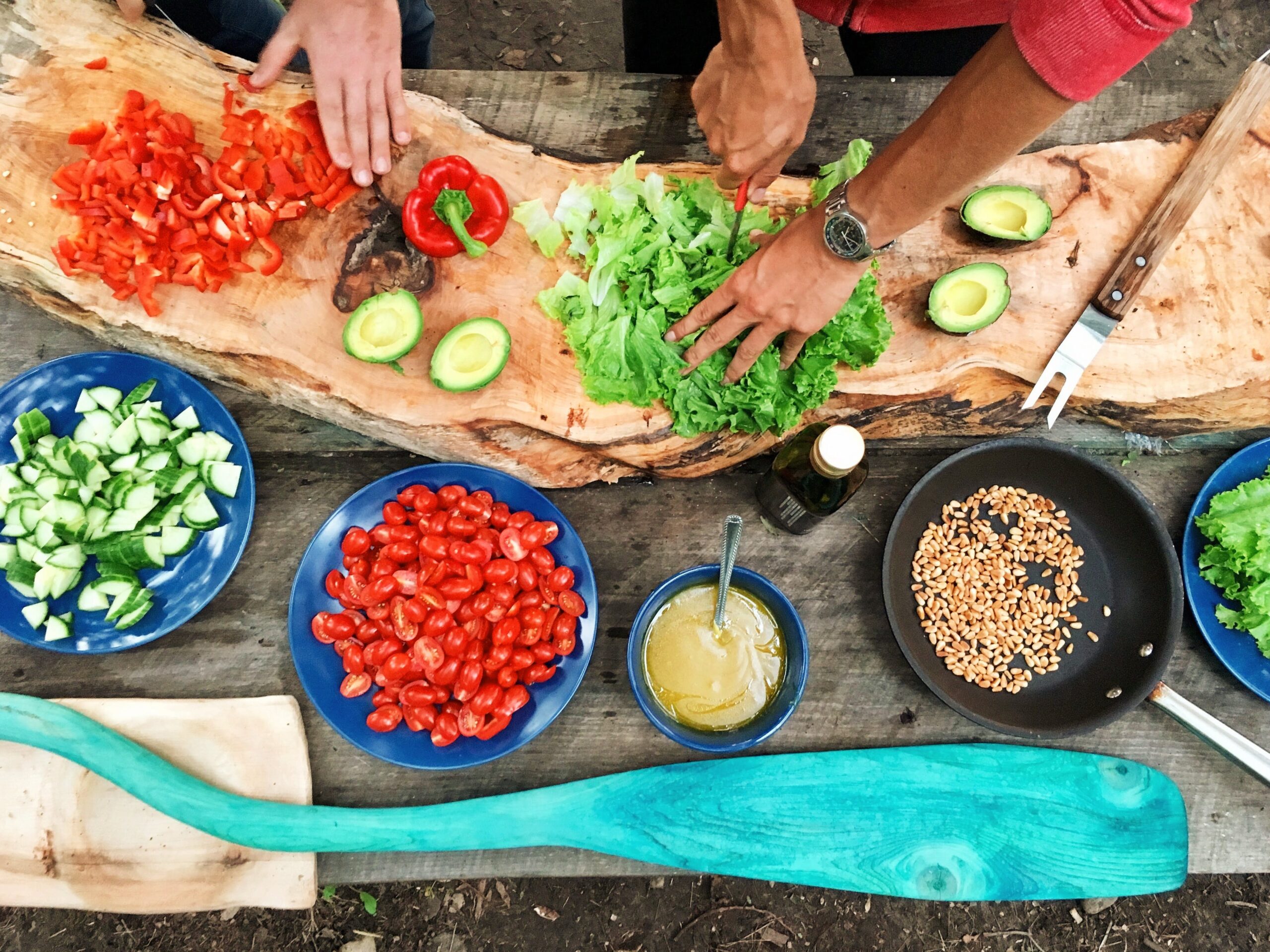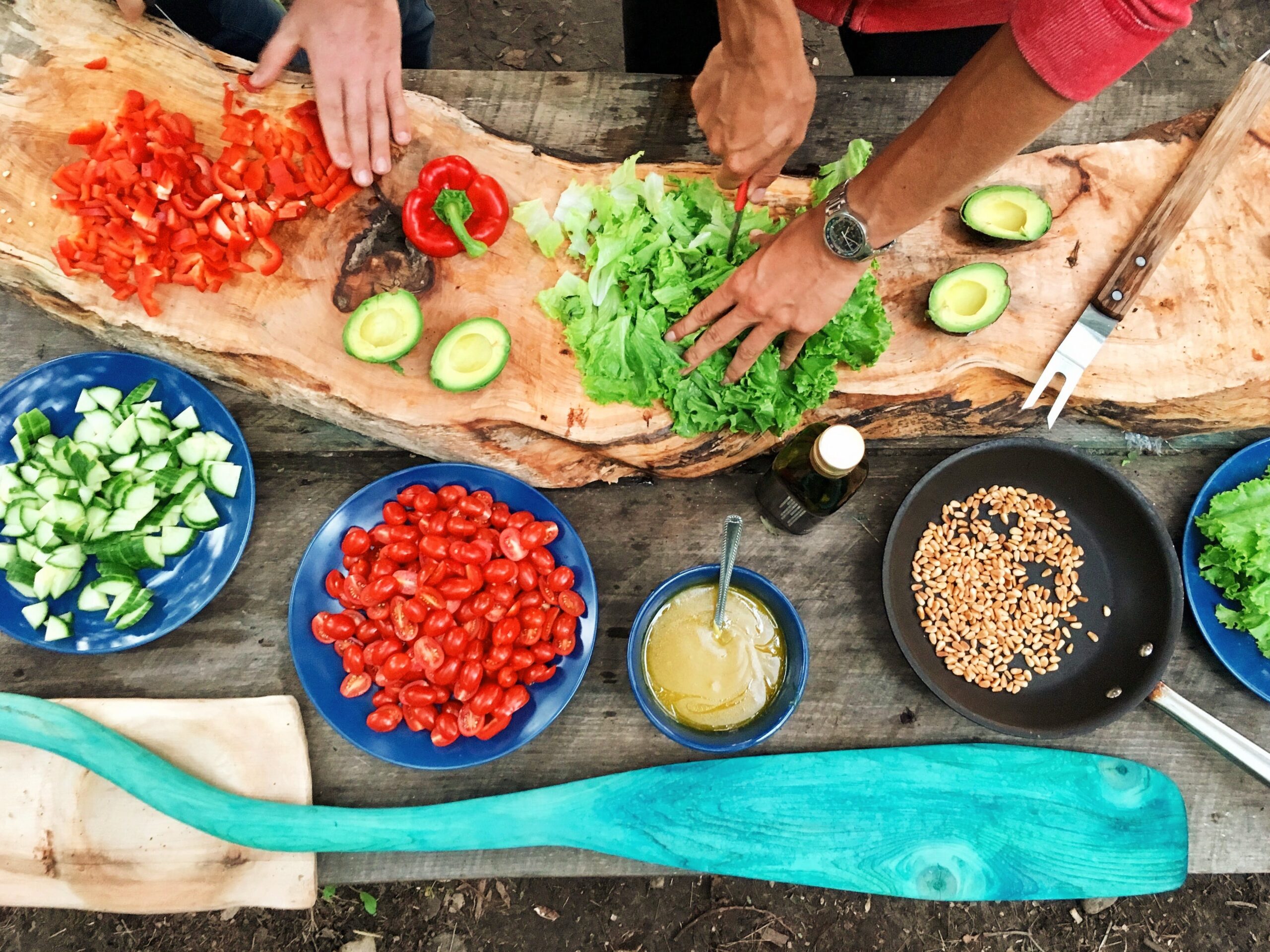Get ready to take your pasta cooking skills to a whole new level with our guide to achieving the perfect al dente excellence. Tastepan’s expert cooking tips and techniques will have you cooking pasta like a pro in no time. Discover the secrets to perfectly cooked pasta that is tender yet firm to the bite, ensuring a delightful texture and flavor in every dish. With our step-by-step instructions and helpful videos, you’ll be able to master the art of al dente cooking and elevate your pasta dishes to new heights. So grab your apron and get ready to impress your family and friends with your pasta prowess. Let’s get cooking!

Choosing the Right Pasta
Understanding Different Pasta Shapes
When it comes to choosing the right pasta, understanding the different shapes is essential. Each pasta shape has its own unique characteristics and is best suited for specific types of dishes. For example, long and thin pastas like spaghetti and linguine are perfect for sauces with a smooth consistency, while short and chunky shapes like penne and farfalle are great for holding chunky sauces. Ribbon-like pastas like fettuccine and tagliatelle are ideal for creamy sauces, and tube-shaped pastas like rigatoni and macaroni work well with baked dishes.
Matching Pasta Shapes with Sauces
To truly elevate your pasta dishes, it’s important to match the pasta shape with the sauce. The texture and shape of pasta can greatly influence how the sauce clings to it, affecting the overall taste and experience. For example, lighter, delicate sauces pair well with thinner pasta shapes, while thicker, heartier sauces require pasta with ridges or ridges to help hold the sauce. Consider the characteristics of both your chosen pasta and sauce to create a harmonious and satisfying combination.
Considering Dietary Restrictions
When choosing pasta, it’s important to consider dietary restrictions. Fortunately, there are numerous options available for those who follow specific diets. For individuals with gluten intolerance or celiac disease, gluten-free pasta made from alternative grains like rice or quinoa is a great option. For those following a vegetarian or vegan diet, there are pasta variations made without animal products. Additionally, whole wheat or whole grain pasta is a healthier choice for individuals looking to increase their fiber intake.
Cooking Equipment and Ingredients
Selecting the Right Pot
Choosing the right pot for cooking pasta can make a significant difference in the final result. A large, deep pot with a lid is ideal for boiling pasta. The size of the pot is important as it allows the pasta to move freely without sticking together. Additionally, a heavy-bottomed pot helps distribute heat evenly and prevents scorching.
Using Ample Amount of Water
Using an ample amount of water is crucial when cooking pasta. As a general rule, you should use 4 to 6 quarts of water for every pound of pasta. Sufficient water prevents the pasta from sticking together and allows it to cook evenly. Using too little water can result in clumpy and undercooked pasta.
Adding Salt to the Water
Adding salt to the boiling water is a step that should not be overlooked. Salt enhances the flavor of the pasta, giving it a more enjoyable taste. As a guideline, add about 1 to 2 tablespoons of salt for every 4 quarts of water. The salted water also seasons the pasta from within, resulting in a more flavorful dish overall.
Quality of Pasta Brands
Choosing a high-quality pasta brand can greatly impact the taste and texture of your final dish. While there are many different brands available, it’s worth investing in a trusted and reputable one. Quality pasta tends to have a better texture, holding its shape and firmness when cooked. Experiment with different brands to find the one that suits your taste preferences.

Cooking Process
Boiling Water
Before you begin cooking pasta, start by bringing a large pot of water to a rolling boil. It’s important to wait until the water is boiling vigorously before adding the pasta. This ensures that the pasta cooks evenly and does not become mushy or overcooked.
Adding Pasta to Boiling Water
Once the water is boiling, add the pasta to the pot. Gently drop the pasta into the water, making sure to stir immediately to prevent sticking. Allow the pasta to cook according to the package instructions, stirring occasionally to ensure even cooking.
Stirring Occasionally
Stirring the pasta occasionally while it cooks helps prevent it from sticking together and ensures even cooking. Use a long spoon or pasta fork to gently stir the pasta, making sure to reach the bottom of the pot. This will also help distribute the heat and ensure that every strand of pasta is cooked to perfection.
Testing Pasta for Doneness
To determine if the pasta is cooked to the desired level of doneness, taste a small piece. Al dente pasta should be firm to the bite, with a slight resistance in the center. If the pasta is still too hard, continue cooking for a bit longer. Avoid overcooking the pasta, as it can result in a mushy texture.
Timing and Techniques
Determining Cooking Time
Follow the cooking time specified on the pasta package as a guideline, but also rely on your personal taste preferences. Some people prefer their pasta slightly softer, while others enjoy it on the firmer side. Taste the pasta frequently towards the end of the recommended cooking time to ensure it reaches the desired consistency.
Reserving Pasta Water
Before draining the cooked pasta, be sure to reserve a cup of the pasta water. The starchy water can be used to adjust the consistency of the sauce and help it adhere to the pasta better. The pasta water also contains some of the pasta’s flavor, which can enhance the overall taste of the dish.
Using a Timer
To avoid overcooking or undercooking the pasta, using a timer can be incredibly helpful. Set a timer according to the recommended cooking time and periodically check on the pasta to ensure it is cooked to your preference. This allows you to multitask in the kitchen without the risk of forgetting about the pasta.
Different Warmth Levels
When it comes to pasta, it’s important to consider different serving temperatures. Pasta can be served hot, warm, or even cold, depending on the dish and personal preference. Understanding the desired warmth level will help you time the cooking process and plan the rest of the meal accordingly.

Achieving Al Dente Texture
Understanding Al Dente
Al dente is an Italian term that translates to “to the tooth.” It refers to the ideal texture of pasta, where it is cooked just enough to be firm to the bite while still retaining a slight chewiness in the center. Achieving the al dente texture requires attention to cooking time and careful monitoring.
Consistency and Texture
The consistency and texture of al dente pasta should be uniformly cooked throughout, with no raw or overcooked parts. When properly cooked, the pasta should have a pleasant bite and retain its shape, without turning mushy or falling apart. Al dente pasta ensures a satisfying and enjoyable eating experience.
Avoiding Overcooking
Overcooking pasta can result in a soggy and unappetizing dish. To avoid this, closely monitor the cooking time and frequently taste the pasta towards the end to check for the desired level of doneness. Remember that the pasta will continue to cook slightly after it is drained, so it’s better to slightly undercook it and allow it to finish cooking in the sauce.
Dealing with Common Pasta Problems
Sticky or Clumped Pasta
Sticky or clumped pasta is a common issue that can be easily avoided. To prevent this, make sure to use an ample amount of water and stir the pasta immediately after adding it to the pot. Stirring occasionally during the cooking process will also help separate the strands and keep the pasta from sticking together.
Pasta Sticking to the Bottom
When pasta sticks to the bottom of the pot, it’s usually due to insufficient water or not stirring frequently enough. To prevent this, make sure to use enough water to fully submerge the pasta and stir it regularly. Using a non-stick pot or adding a little oil to the water can also help prevent sticking.
Pasta Sticking to the Pot
Pasta sticking to the pot can be frustrating, especially when it becomes difficult to remove. To avoid this, make sure to use a large enough pot to allow the pasta to move freely. Stir the pasta occasionally during cooking to prevent it from sticking to the pot. If the pasta does stick, carefully loosen it with a fork or tongs.
Pasta That’s Too Chewy
If your pasta turns out too chewy, it may have been undercooked. To fix this, simply return the pasta to the pot and cook it for a little longer, stirring occasionally and testing for doneness frequently. Remember to achieve the desired al dente texture by cooking the pasta until it is firm to the bite but still has a slight chewiness.
Enhancing the Flavor
Adding Salt to the Water
Adding salt to the boiling water not only helps season the pasta but also enhances its overall flavor. The salt penetrates the pasta as it cooks, resulting in a more enjoyable taste from within. Experiment with different types of salt, such as sea salt or flavored salts, to add extra depth of flavor.
Using Flavored Broths
For an extra burst of flavor, consider cooking your pasta in flavored broths instead of plain water. Vegetable, chicken, or beef broth can infuse the pasta with additional savory notes, making it more delicious and satisfying. Simply replace the water with the desired broth and adjust the cooking time accordingly.
Infusing Pasta with Herbs and Spices
Another way to enhance the flavor of your pasta is by infusing it with herbs and spices. Add a handful of fresh herbs like basil, thyme, or rosemary to the boiling water to infuse the pasta with their aromatic flavors. You can also add spices like garlic powder, chili flakes, or black pepper to the water for an extra kick.
Draining and Dressing the Pasta
Using a Colander or Spider
To drain the cooked pasta, use a colander or spider instead of pouring it into a sink. The colander allows the water to drain away while keeping the pasta intact. Alternatively, a spider (a wide, shallow spoon with holes) can be used to scoop the pasta out of the pot, allowing the water to drip away as you transfer it.
Reserving Pasta Water
Before draining the pasta, remember to reserve a cup of the pasta water. The starchy water can be added to the sauce to adjust its consistency and help it cling better to the pasta. The pasta water also contains valuable flavor compounds, which can enhance the overall taste of the dish.
Tossing the Pasta
Once the pasta is drained, it’s important to toss it immediately with the desired sauce or ingredients. Tossing ensures that the pasta is evenly coated and allows the flavors to meld together. Use a pair of tongs or a pasta fork to gently mix the pasta with the sauce, taking care not to break the strands or shapes.
Maintaining Moisture
To prevent the pasta from drying out, it’s important to maintain moisture. Keep the cooked pasta covered with a lid or damp cloth until you’re ready to serve. This will help retain heat and prevent it from becoming dry or clumping together.
Serving Suggestions
Choosing the Right Plate
When serving pasta, the right plate can make all the difference. Opt for a shallow, wide-rimmed plate or bowl that allows the pasta to spread out and showcases the dish’s colors and textures. A plate with a slight curve or concave shape can help contain the sauce and prevent it from spilling over.
Garnishing the Dish
Garnishing your pasta dish adds an extra touch of visual appeal and flavor. Consider adding a sprinkle of fresh herbs like parsley or basil on top, or a drizzle of high-quality extra virgin olive oil. Grated cheese, such as Parmesan or pecorino, can also be a delicious addition that complements the flavors of the pasta.
Pairing with Complementary Ingredients
To make your pasta dish shine, consider pairing it with complementary ingredients. For example, a tomato-based pasta sauce can be enhanced with fresh basil and mozzarella. Creamy pasta sauces can be balanced with crispy pancetta or sautéed mushrooms. Experiment with different combinations and flavors to create truly unforgettable pasta dishes.
Experimenting with Pasta Recipes
Adding Ingredients to the Water
To infuse your pasta with additional flavor, consider adding ingredients directly to the boiling water. For example, you can add a clove of garlic, a sprig of fresh herbs, or even a slice of lemon to the water before adding the pasta. This subtle infusion can add depth and complexity to your dish.
Creating Unique Flavor Profiles
Don’t be afraid to experiment and create unique flavor profiles with your pasta dishes. Mix and match different sauces, herbs, spices, and ingredients to discover exciting combinations. Consider incorporating international flavors, such as Asian-inspired pasta dishes with soy sauce and ginger, or Mediterranean-style pasta with olives and feta cheese.
Exploring Pasta Substitutes
Pasta substitutes are gaining popularity, providing options for those with dietary restrictions or seeking a change in flavors. Explore alternatives like spiralized vegetables such as zucchini or butternut squash, or legume-based pasta made from chickpeas or lentils. These substitutes offer a healthier twist to traditional pasta dishes and can add variety to your culinary repertoire.
Mastering the art of cooking pasta requires attention to detail, technique, and experimentation. By understanding the different pasta shapes, cooking processes, and techniques, you can create perfectly cooked pasta dishes that are flavorful and satisfying. Don’t be afraid to explore new flavors and experiment with unique combinations to truly make your pasta dishes shine. With the right knowledge and a touch of creativity, you’ll become a pasta expert in no time.

